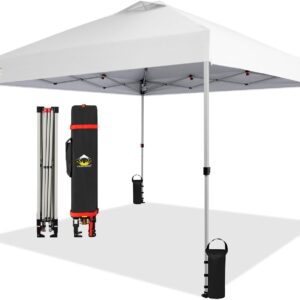Price: $19.99
(as of Oct 16, 2024 07:33:10 UTC – Details)
Learn the ancient skill sets our forebears used to survive and thrive in the wild—complete with step-by-step illustrations and easy-to-follow diagrams.
The act of bushcraft is the revival of skills widely known and practiced for centuries that use the resources found in the natural environment to survive. Although traditional bushcraft is mainly about wilderness survival, its focus on using the tools that already surround us can be applied to urban or suburban settings to serve as a practice for self-sufficiency and decreasing your footprint on Earth.
Learn these basic bushcraft survival skills and more:
Foraging Tools (knives, axes, rope, etc.) Trapping and Hunting Game Water Purification Shelter Building Fire Building
Elegantly designed and beautifully illustrated, the Complete Illustrated Encyclopedia series offers comprehensive, display-worthy references on a range of intriguing topics, including dream interpretation, techniques for harnessing the power of dreams, flower meanings, and the stories behind signs and symbols.
Also available in the series: Complete Book of Dreams, Complete Language of Flowers, Complete Book of Birthdays and Complete Guide to Astrological Self-Care.
From the Publisher


BUSHCRAFT
Bushcraft can mean a number of different things to different people. For some, it is simply developing enough skills to be able to enjoy the outdoors, camp under the stars, and appreciate what the nature around you can provide. Others like to see it as using that knowledge for survival.
This book blends both those interpretations into one. The better prepared you are for the outdoors and the more skills you know, the more enjoyment you will get—and yes, if push came to shove, you would be in a better position to survive if you got lost in a jungle. However, as with anything in life, they are skills that can be built up gradually. Getting out into nature is such a pleasure and so good for you that nothing should stand in the way of that happening.
Fiber
Pros
Cons
Customer Reviews
—
—
—
Price
—
—
—
Wool Absorbs lots of moisture Dries slowly, Itchy, Bulky
Silk Absorbs lots of moisture, Feels wonderful, Lightweight Difficult to clean, Dries slowly, Expensive
Polypropylene Wicks moisture effectively, Dries quickly Some retain odors, Some are difficult to clean, Some are scratchy
Polyester Wicks moisture effectively, Dries quickly, Washes easily No significant problems
ALTERNATIVE COOKING METHODS: If you’re doing survival cooking and don’t have access to stoves, grills, and pots, there are various alternatives for how to cook food, depending on what you’re cooking.








SPIT:
Small mammals are often cooked on a spit, but even a squirrel takes a while to cook, and it’s no fun trying to hold one steady over a fire the whole time.
To support the spit, cut two stakes with Y-shaped tops and pound them into the ground on either side of the fire. If you find that the meat keeps flopping over into the same position when you turn the spit, cut a long, light stick and sharpen one end to stabilize the meat, as shown.
POT HANGER:
If you have some cooking gear, a pole stretched across a pair of Y-stakes can also be used as a pot hanger. If you make the stakes just a bit taller, it’s a nice way to keep a pot of water warm for tea while you laze around the fire after a meal.
FISH GRILL:
Many fish will simply fall apart as they cook. To prevent your hard-won meat from falling into the fire, make a fish grill out of young green branches. Make two rectangles or ovals, and weave a wide mesh of green branches with a simple over-under-over pattern. Tie the two pieces together over the fish and rest the grill on stones over a low fire or hot coals.
RACK:
Building a wooden rack over a fire isn’t as crazy as it seems at first glance. If you use green wood at least 2 in (5 cm) in diameter and place it just above the live flames, it will last for well over an hour— long enough to cook two or three meals. Or build it even higher and use it to smoke your meat to preserve it for long-term use.


PREPARING A FIRE
Nothing typifies sleeping out in the bush like a campfire.
Many people who do all their cooking over a stove still build a campfire at night. It’s the hearth we gather around when the day’s work and traveling are done. As we relax from the day’s rigors, we stare into the flames and then the dying embers, telling stories, listening to night sounds, or just thinking about our place in the universe.
Fire can be your most valuable survival tool, too. If you’re cold or wet and have no additional clothing resources, fire will make you warm and dry your clothes. It will cook your food, signal for help, and help you make other tools.
COLLECT MATERIALS Fires Must be Built Up in Stages
TINDER: The first tiny flame must take hold in fine, dry, often fluffy material called tinder. Tinder provides the heat to light slightly larger material called kindling.
KINDLING: Kindling consists of twigs, cones, and very small sticks. Once the kindling is alight, you can begin adding fuel wood.
FUEL WOOD: This can be anything from larger sticks to split logs (see pages 112–113), sawn branches and small logs. Fuel wood provides the heat to cook over, but burns slowly enough so that you don’t have to constantly tend the fire.
All materials must be dry. Except in a desert, any wood lying on the ground is almost sure to be too wet to burn.
EIGHT STEPS TO FIRE 1) Locate an appropriate location. 2) Prepare the site. 3) Gather materials for an enclosure, and assemble it. 4) Gather or prepare three types of fire materials (tinder, kindling, and fuel wood). 5) Lay the fire. 6) Kindle the flame. 7) Build the flame. 8) Maintain the fire.


READING THE WEATHER
Forecasting…Maybe Not
Many camping books spend pages explaining weather dynamics and how to read weather maps. Of course, if you had access to current weather maps, you’d also have access to current weather reports generated by professional meteorologists! As for observing the movements of animals, red skies at morning and other such folk wisdom —well, you never hear a meteorologist using that information to make or support a forecast.
The best resource for weather information is a weather-band radio that picks up nonstop local reports from the National Weather Service. Otherwise, stay alert to these easily observed natural signs:
COLD FRONT: If the wind suddenly rises or shifts and the temperature drops significantly along with it, a cold front is moving in. Aside from the fact that the cold might be of long duration, it can cause heavy rainfall.
LINE SQUALL: If you’re in flat, open country, and you see a low, dark wall of clouds moving toward you, you’re observing a heavy rainstorm accompanying the leading edge of a front. Take shelter fast.
CUMULONIMBUS CLOUDS: These are huge, dark, towering clouds with an “anvil-shaped” top. Expect a thunderstorm.
Publisher : Wellfleet Press; Reprint edition (July 20, 2021)
Language : English
Paperback : 256 pages
ISBN-10 : 1577152093
ISBN-13 : 978-1577152095
Item Weight : 1 pounds
Dimensions : 6 x 1 x 7.45 inches



















Reviews
There are no reviews yet.